Main Window
The BA Project Builder is divided into several sections and windows.

Menu
The individual actions and commands can be executed via the menu. Each menu item can be reached via the keyboard.
After pressing the Alt key, a letter of each menu item is underlined.

Now press the underlined letter on the keyboard.
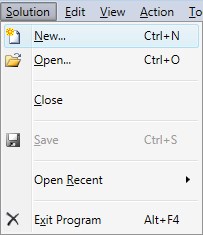
Letters are underlined once more in the menu; you can execute the commands with these letters.
To execute the Close command in the Solution menu, you must press the <Alt> key and then 's' and 'c' individually.
Some important menu items are directly accessible via shortcuts, however. The corresponding shortcut, if one exists, is shown in the menu behind the respective command.
To call the Open command with a shortcut, you must press and hold the <Ctrl> key and then press the 'O' key.
Toolbar
Important commands can be accessed directly via the toolbar.

Context menus
Several elements in the tool windows offer context menus. Certain actions such as Add or Delete can be directly executed via these menus.
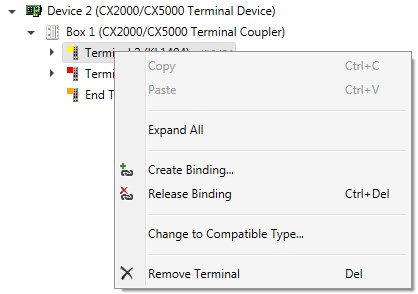
Detail View
In the middle of the BA Project Builder is the Detail View. Further dialogs are opened in this section by double-clicking on certain elements in the tool windows.
Tool Windows
The tool windows are grouped around the Detail View. A tool window is a self-contained window that can be freely moved or even completely hidden. In addition to operation with the mouse, the View and Window menus also offer appropriate commands.
Adjust position
The size and position of the tool windows are freely adjustable.
To do this, left-click on the upper area of a tool window. If several tool windows are positioned on top of one another in an area, you must click on the corresponding tab.
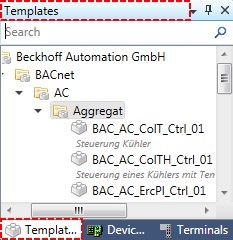
Keep the left mouse button pressed and drag the window to the desired position. For better orientation the tool window is displayed as a blue rectangle. Small icons are also shown, which indicate possible positions.
As soon as you drag the tool window onto one of these icons, it is docked to the corresponding point. Release the left mouse button when the desired position has been reached.
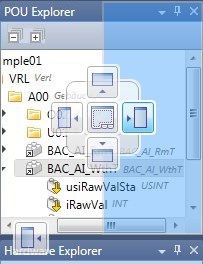
The windows can also be placed outside of the BA Project Builder, which can be very helpful in the case of workstations with several monitor screens.
Auto Hide
Each tool window has an Auto Hide function. This is switched on or off via a small symbol in the upper area of the tool window.
If this is switched on, the tool window collapses to the edge of the BA Project Builder. If you move the mouse over a hidden tool window, it will be shown again.
If the mouse leaves the tool window it will automatically be collapsed to the edge again. The command Window -> Auto Hide All collapses all tool windows simultaneously.
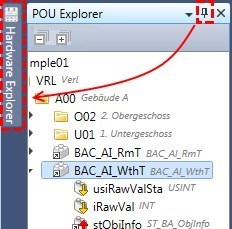
A tool window can be closed with the X in the upper area. Closed tool windows can be opened again via the menu item View. All tool windows can be closed simultaneously with the command Window -> Close All.
The command Window -> Reset Window Layout resets all windows to their standard positions.
Drag & Drop
Certain elements can be copied from one tool window to another by drag & drop. Drag & drop is also used within a tool window, for example for changing the position.
Hover with the mouse over the desired element, then press and hold the left mouse button. Keeping the mouse button pressed, drag the element to the desired position. The icon below the mouse pointer indicates whether the element can be deposited at the current position.
If you press and hold the shift key before releasing the left mouse button, you can insert several elements at the same time.
In the dialog, specify the number of elements that you wish to add.
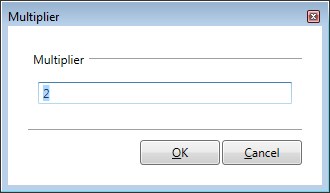
In some tool windows the position of the elements can be changed by drag & drop.
If the position is valid, a red line marks the position to which the element is moved.
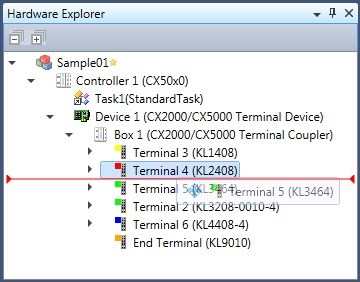
POU Explorer
The POU Explorer structures the individual POUs according to the data point addressing description (DPAD). Each folder level represents a certain area of the DPAD.
The POUs are dragged out of the Templates tool window and onto the desired folder by drag & drop or via the context menu.
The full name of the PLC function block is derived from the position inside the POU Explorer when generating the TwinCAT project files.
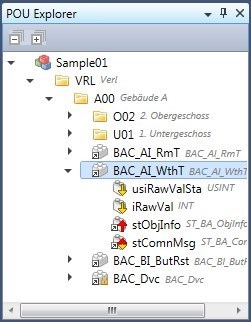
A double-click on a POU opens a further dialog in the Detail View. Additional parameters such as BACnet properties can be edited via this dialog.
Further information is displayed in the Properties tool window for each marked element in the POU Explorer.
Hardware Explorer
The employed hardware is entered in the Hardware Explorer. This is added from the Devices and Terminals tool windows by drag & drop or by context menu.
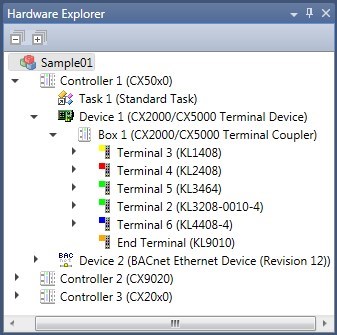
Here, too, a double-click opens further dialogs in the Detail View. Further information is displayed in the Properties tool window for each selected element.
Templates
All templates that can be added to the POU Explorer are displayed in this tool window.
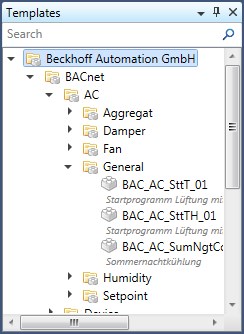
The display in the tool window can be filtered by entering a name in the search field in the upper area.
The Properties tool window displays further information about each marked element.
Devices
The elements that can be added to the Hardware Explorer are displayed in the Devices tool window.
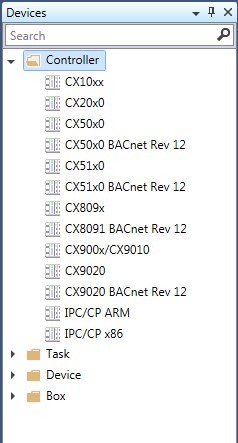
The display in the tool window can be filtered by entering a name in the search field in the upper area.
The Properties tool window displays further information about each marked element.
Terminals
All terminals that can be added to the Hardware Explorer are located in the Terminals tool window.
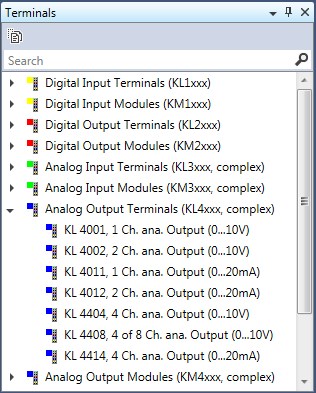
To speed up the choice of terminal, only the most frequently used terminals are displayed. The display filter is deactivated by the button in the upper area and all available terminals are then displayed.
The display in the tool window can be filtered by entering a name in the search field in the upper area.
The Properties tool window displays further information about each marked element.
Properties
The Properties tool window displays further information about the currently marked element in another window.
The sorting method (alphabetical or by category) can be changed with the two buttons in the upper area.
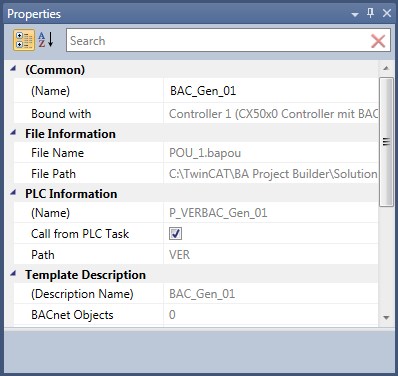
The display in the tool window can be filtered by entering a name in the search field in the upper area.
Output
Various messages are displayed in the Output tool window. Messages are thus displayed during the generation of the TwinCAT project files or if errors are detected in the project engineering.

The Output tool window can be deleted using the button in the top left-hand area. Furthermore, the messages can be saved in a text file.
The messages are divided into three categories: Errors, Warnings and Messages. Each category can be hidden by actuating the respective button in the upper area.
The next error message (Error) is marked by pressing the F4 key.